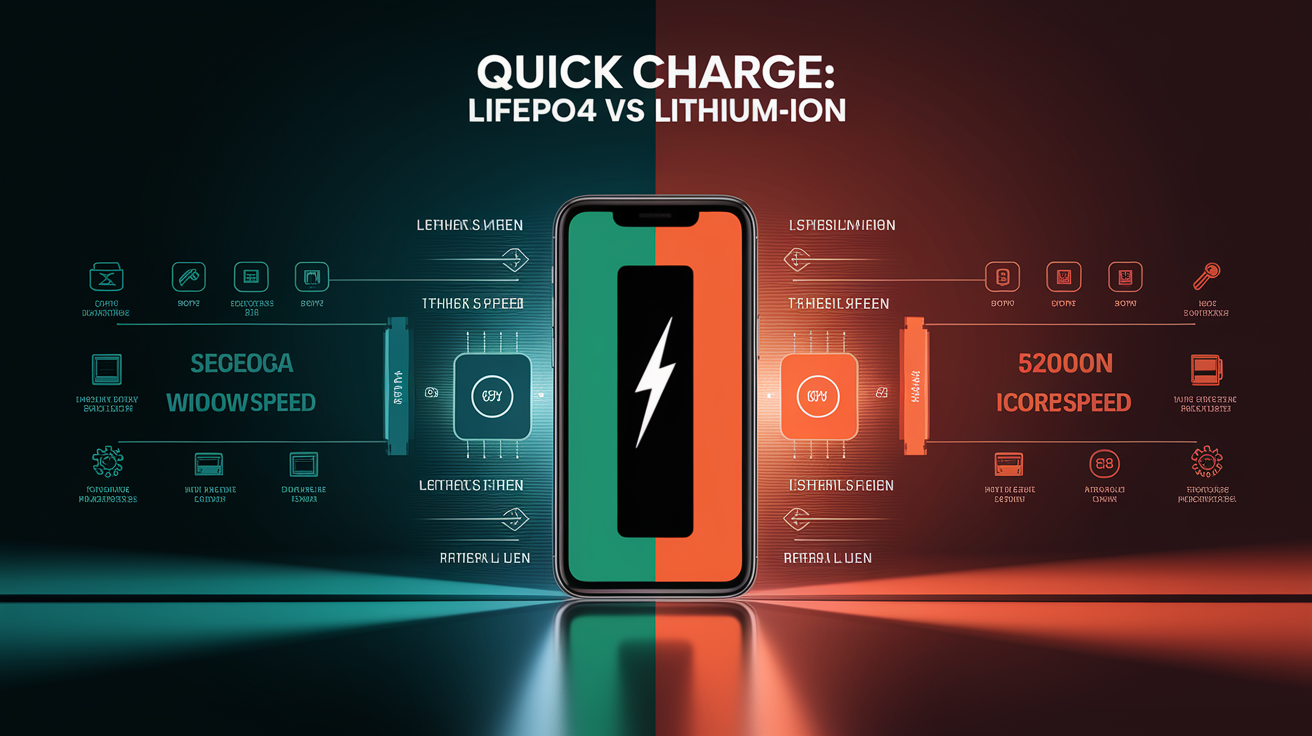Battery Battle Royale: LiFePO4 vs Lithium-Ion Solar Storage
Solar energy storage has reached a critical decision point. As homeowners and businesses invest in solar panels, the choice between Lithium Iron Phosphate (LiFePO4) and conventional lithium-ion batteries determines system performance, safety, and long-term value. This comprehensive analysis cuts through marketing claims to deliver the technical insights you need for your solar energy storage system.
Quick Charge: LiFePO4 vs Lithium-Ion in One Sentence
LiFePO4 batteries sacrifice energy density for superior safety and longevity, delivering 3-10 times more charge cycles than conventional lithium-ion batteries while eliminating thermal runaway risks that plague traditional lithium-ion chemistries.

Performance Face-Off
The performance characteristics reveal distinct advantages for each technology. LiFePO4 batteries deliver 90-120 Wh/kg energy density compared to lithium-ion’s 150-200 Wh/kg, making them bulkier for equivalent capacity. However, this trade-off unlocks remarkable durability advantages.
Cycle Life Dominance
LiFePO4 batteries excel in cycle life, offering 1,000 to 10,000 charge cycles versus lithium-ion’s 500 to 1,000 cycles. This translates to decades of reliable service in solar applications where daily cycling is standard. For off-grid solar systems requiring consistent deep discharge capabilities, this longevity advantage becomes financially decisive.

Temperature Performance
Operating temperature range significantly impacts solar battery performance. LiFePO4 batteries maintain discharge rates without significant degradation under variable environmental conditions, making them superior for installations in extreme climates. Conventional lithium-ion batteries experience accelerated degradation at elevated temperatures, particularly problematic for rooftop installations.
Voltage Characteristics
Lithium-ion batteries provide higher nominal voltages per cell (3.6-3.7V) compared to LiFePO4’s 3.2V. This voltage difference affects system design and compatibility with existing solar inverters and Battery Management Systems (BMS).
Safety Standout
Safety profiles distinguish these technologies dramatically. LiFePO4 batteries eliminate thermal runaway risks through their stable lithium iron phosphate chemistry, while conventional lithium-ion batteries using cobalt oxide or NMC (Nickel Manganese Cobalt) chemistries remain vulnerable to overheating.

Thermal Stability Analysis
LiFePO4’s thermal stability stems from its cobalt-free chemistry. The absence of volatile cathode materials prevents the cascading thermal events that can trigger fires in conventional lithium-ion batteries. This safety advantage proves critical for residential battery backup systems where failure consequences extend beyond equipment damage.
Fire Risk Mitigation
LiFePO4 batteries demonstrate superior thermal stability and safety profiles essential for home energy storage applications. Unlike lithium-ion batteries that require sophisticated cooling systems and safety monitoring, LiFePO4 batteries operate safely across wider temperature ranges without additional thermal management.
Cost Calculator
Initial cost comparisons favor lithium-ion batteries, but lifecycle economics tell a different story. LiFePO4 batteries command higher upfront prices but deliver superior cost per kWh over their operational lifetime.

Total Cost of Ownership
LiFePO4’s extended lifespan of up to 10,000 cycles compared to 1,000 cycles for lithium-ion creates compelling long-term value. For solar installations requiring frequent cycling, this longevity advantage reduces replacement costs and system downtime.
Maintenance and Replacement Factors
- LiFePO4 batteries require minimal maintenance due to stable chemistry
- Lower degradation rates reduce capacity loss over time
- Extended shelf life (350 days vs 300 days) benefits seasonal solar applications
- Reduced cooling and safety system requirements lower installation costs
Green Credentials
Environmental impact extends beyond operational efficiency to manufacturing and disposal considerations. LiFePO4 batteries eliminate cobalt and nickel dependency, addressing supply chain ethics and environmental concerns.
Material Sustainability
The cobalt-free battery chemistry of LiFePO4 removes ethical mining concerns while improving recyclability. LiFePO4 production reduces supply chain and ethical concerns while enhancing recyclability compared to conventional lithium-ion batteries dependent on critical metals.
Lifecycle Environmental Impact
Extended cycle life reduces manufacturing demand per kWh of energy stored over the battery’s lifetime. LiFePO4’s superior longevity means fewer batteries manufactured, transported, and disposed of for equivalent energy storage capacity.
Fit for Your Solar Setup
System compatibility determines practical implementation success. LiFePO4 batteries require specific charging systems tailored to their chemistry, differing from conventional lithium-ion battery requirements.
Technical Integration Requirements
LiFePO4’s lower nominal voltage and tighter charging voltage tolerances demand compatible inverters and charge controllers. Replacing existing lithium-ion batteries with LiFePO4 requires system evaluation to ensure proper Battery Management System compatibility.
Application-Specific Advantages
- Off-grid solar systems: LiFePO4’s deep cycling ability and longevity excel in daily discharge applications
- Residential battery backup: Safety profile and thermal stability suit home installations
- Microgrid applications: Reliability and consistent performance support critical infrastructure
- RV and mobile solar: Vibration resistance and temperature tolerance benefit mobile applications
Depth of Discharge Capabilities
LiFePO4 batteries support deeper discharge cycles without degradation, maximizing usable capacity. This advantage proves particularly valuable for solar energy storage solutions where maximizing stored energy utilization improves system economics.
Final Spark: Choosing Your Champion
The optimal choice depends on specific application priorities. LiFePO4 batteries excel when safety, longevity, and deep cycling capability outweigh size and initial cost considerations. For residential battery backup, off-grid installations, and applications prioritizing system reliability, LiFePO4 delivers superior long-term value. Conventional lithium-ion batteries remain competitive for space-constrained applications where energy density and initial cost drive decisions, though their shorter lifespan and safety considerations require careful evaluation for solar storage applications.







